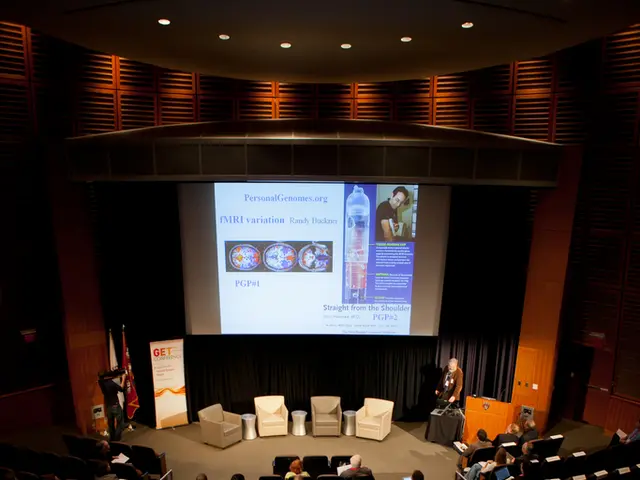"Węsiory's Stone Circles": The Enigmatic Stone Structures of Poland
Hello there and welcome! Fancy some tidbits about Poland's hidden gem, often referred to as the "Polish Stonehenge"? Located smack dab in the tranquil pine forests of Weśiory, near picturesque Lake Długie, you'll find this enigmatic site that's not only a feast for the eyes but a treasure trove for historians and tourists alike.
This mesmerizing spot is home to a collection of mystifying stone circles and burial mounds that leave visitors both bewildered and enchanted by their historical and mythical allure. Despite not boasting the grandeur of its Celtic counterpart across the channel, the Polish Stonehenge still manages to make quite an impression. The site encompasses a whopping twenty stone structures, with the largest circle boasting a diameter of a whopping 16 meters. And guess what? Archaeologists have unearthed over a hundred cremation and skeletal graves, many containing well-preserved ornaments and blingy jewelry, hinting at the site's immense importance in ancient times.
Now, these stone structures, formed from rectangular steles reaching up to one and a half meters in height, have baffled scientists and historians for years. The most prominent circle measures a considerable 26 meters in circumference. Of the four main circles, three remain in relative decent condition, while one unlucky circle has suffered some partial destruction.
But what's the deal with these circles, you ask? There's been plenty of debate among scholars about their origin and purpose. At first, some believed they served as grave markers. But then, Professor Ryszard Wołągiewicz, an expert on the Wielbark culture, had a different take. After a deep dive into the site, Scandinavian folklore, and historical accounts, Wołągiewicz proposed a more intriguing theory – these circles were gathering places for tribal elders. These wise elders, possibly seeking guidance from their deceased ancestors, made crucial decisions affecting their community's future and held judicial proceedings within the circles. It's not hard to see why these circles might have held spiritual and tribal significance.
These circles, it is believed, date back to the migration period of the Goths. Originally hailing from present-day Scandinavia and the Baltic islands of Öland and Gotland, the Goths settled in the Pomeranian region for around 250 years, cultivating villages, farming, and engaging in livestock farming and craftsmanship. During this time, the Wielbark culture emerged, characterized by its distinctive burial practices.
Now, this isn't just a historical site, oh no. The Polish Stonehenge has also become a mecca for modern-day mystics and paranormal enthusiasts. Some claim that entering the circles induces a tingling sensation, attributed to the site's magical healing energy. Others believe the circles emit mysterious energy that can restore the balance of energy fields in the body, offering therapeutic effects. These beliefs attract many visitors who stand silently among the stones, eyes closed, awaiting a spiritual rush.
Beyond the mystical interpretations, theories regarding ancient astronomical observatories abound. Proponents believe the stone circles could have been used to determine the timing of agricultural activities like sowing and harvesting. However, the exact origin of the stone circles remains a hot topic of debate.
One local legend attributes the construction of the stone circles to the mythical Stolemowie, ancient giants said to have once inhabited the region. This tale, coupled with other accounts of mysterious discoveries like reports of giant skeletons found in the 1950s, continues to fuel speculation about the site's origins.
Erich von Däniken, a Swiss author known for his controversial theories on ancient astronauts, even mentioned the Polish Stonehenge in his writings, speculating that the stone circles were probably remnants of extraterrestrial landing sites. Cosmic, huh?
Today, the Polish Stonehenge is a significant tourist attraction that lures history buffs and paranormal enthusiasts alike. The site is part of the Stone Circle Trail, which links similar structures across the Pomeranian region. Local organizations, such as the Association for the Development of Weśiory, actively promote the site's history through educational programs and community events. Visitors can snoop around the stone circles and burial mounds, with conveniences like parking and a small refreshment stand available at the entrance. The nearby Archaeological Museum in Gdańsk exhibits numerous artifacts unearthed at the site, shedding light on the region's rich cultural tapestry.
Ireneusz Korda from the Sulęczyno Community Cultural Center, which oversees the Weśiory site, hopes for the establishment of a local museum dedicated to the Goths and their cultural heritage. He charmingly remarks that the Goths were the first tourists to the area, and with continued efforts, more modern visitors will follow in their footsteps. Long live the Polish Stonehenge, a historical mystery that continues to captivate and intrigue future generations!
- The Polish Stonehenge serves as a melting pot for researchers, particularly historians and archaeologists, who are fascinated by its enigmatic culture and history.
- In addition to its historical significance, the site has become a popular destination for tourists who are drawn to its mystical allure and energy, which some claim can offer therapeutic effects.
- With the increasing interest in ancient astronomical observatories, the Polish Stonehenge has also spawned theories suggesting that these stone circles were used for agricultural purposes, such as determining the timing of sowing and harvesting.
- AI, energy, space, and lifestyle enthusiasts might find inspiration in the rich historical and cultural tapestry of the region, as seen in the exhibits at the Archaeological Museum in Gdańsk.
- Home-and-garden aficionados might appreciate the nearby picturesque Lake Długie, offering tranquil vistas perfect for relaxation and refreshment during their travels.










